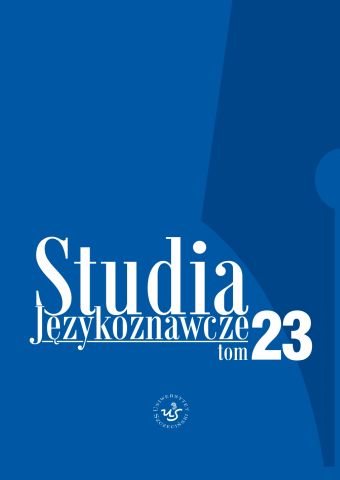Językowa neutralność – sposoby tworzenia form niebinarnych w polszczyźnie i ich recepcja społeczna
Linguistic neutrality – ways of creating non-binarity forms in Polish and their social reception
Author(s): Damian PawłowskiSubject(s): Language and Literature Studies, Theoretical Linguistics, Morphology, Lexis, Pragmatics
Published by: Wydawnictwo Naukowe Uniwersytetu Szczecińskiego
Keywords: contemporary Polish; inclusive language; non-binary language
Summary/Abstract: The article presents the most common linguistic forms currently used to express nonbinarity. The source material was taken from the Facebook group Free Nonbinary State (pl. Wolny Niebinarnistan – a place that brings together both the nonbinary and those interested in (non)binarity), as well as Instagram accounts run by Matthew Adamczyk and asiala_czyta, where book reviews appear. Literature was also analysed (Jack Dukaj’s book Perfekcyjna niedoskonałość and Sam Sylvester i wiele na wpół przeżytych żyć, a young adult novel by Maya MacGregor translated by Artur Łuksza). The reference point for the conducted research was as follows: the website zaimki.pl; articles published by Małgorzata Gębka-Wolak and Aleksandra Walkiewicz in the field of linguistic exponents of nonbinarity, as well as comments and/or responses from the Council of the Polish Language and the European Parliament. The article presents both linguistic limitations leading to less frequent use of selected nonbinary forms and opportunities for nonbinary people to express their own identity. It is hypothesised that the most commonly used linguistic solutions currently are osobatywy and iksatywy (person-forms and x-forms). Their spread can be attributed to the ease of creating these forms. It is tentatively assumed that these are the forms that will be used more and more often and will find their way into the language used by a wider range of people.
Journal: Studia Językoznawcze. Synchroniczne i diachroniczne aspekty badań polszczyzny.
- Issue Year: 2024
- Issue No: 23
- Page Range: 161-179
- Page Count: 19
- Language: Polish

